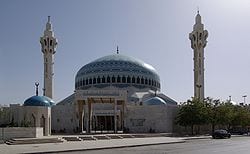The Middle Eastern Kingdom of Jordan is in the process of converting all 6000 of its mosques to solar power, in a government-led project that will be carried out over the course of 2015.
The project – a collaborative effort involving the Kingdom’s energy ministry and its ministry of Islamic Affairs – will start by covering 120 mosques, while issuing a call for tenders to fit out the remainder, according to Ahmad Abu Saa, a representative of the renewable energy department at the ministry.
“Mosques use large amounts of electricity and the project will help to significantly reduce their electricity bills as around 300 days in the year are sunny,” Abu Saa told The Jordan Times this week.
Abu Saa also noted that project – which he described as a “pioneering venture” for the Middle East – would be financed through grants and assistance.
“Based on the funds that we secure, we will go ahead with the project. The more finance we get the faster the project will be implemented. Some of the mosques will get such systems this year,” he said.
But the switch to solar Mosques is just one part of Jordan’s recent renewables push, which received a huge boost at the end of last year, when the European Bank for Reconstruction and Development (EBRD) and the French Development Finance Institution, PROPARCO, committed $100 million in loans towards the development of solar energy projects in the country.
In early January, Jordan’s energy minister Mohammad Hamed said it would use this money to develop renewables projects with a total capacity of 1,800MW, all of which would be connected to the national power grid by the end of 2018.
Speaking at the opening of the Powering Middle East Summit, the minister noted that the Kingdom has already signed 12 power purchase agreements to develop solar projects — mainly in the southern Maan Governorate — with a total capacity of 200MW.
According to the Jordan Times, the government introduced regulations in 2012 paving the way for solar net-metering, under which Jordanians can sell electricity produced by solar energy at a rate of 125 fils per kilowatt hour ($A0.22kw/h). 
A major wind development – the 117MW Tafileh project – is under construction, while another 10MW solar project in Mafraq is also in development, Hamed said.
“By the end of this month, the ministry is going to receive the wind project proposals of round one with a total capacity of about 250MW; and by the end of this year the solar projects of the second round, with a total capacity of 200MW, will be submitted,” he said.
Part of the 200MW of solar is the 52.5MW Shams Ma’an project, a tender that is based around a power purchase agreement signed between the project developers – Qatar’s Nebras Power, Diamond Generating Europe (a subsidiary of Mitsubishi Corporation), and Jordan’s Kawar Group – and the National Electric Power Company (Nepco) of Jordan.
According to a report last week in Amman News Daily, the finished plant will sell electricity at a tariff of $US0.148/kWh. Work is expected to begin on the project before the end of March, and to be completed within two years.










